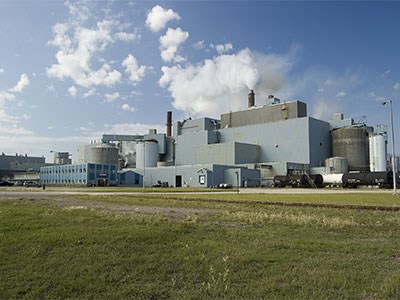The lack of a natural gas pipeline along the northern shore of Lake Superior is putting some communities at a competitive disadvantage.
While it’s hardly a new problem, the high price of energy has the municipalities determined to look for alternative sources of fuel for heating and power.
Toronto-based Northeast Midstream is proposing a liquefied natural gas distribution network for Terrace Bay, Schreiber, Marathon, Manitouwadge and Pic River First Nation that will reduce, or possibly eliminate, their dependency on electricity, heating oil and propane.
The natural gas pipeline in the region only extends as far east as Nipigon, then tracks north along less rocky terrain on Highway 11.
“In our neck of the woods, we’re never going to have a pipeline,” said Daryl Skworchinski, CAO of the Town of Marathon. “The geography of the Canadian Shield just doesn’t allow that.”
Liquefied natural gas (LNG) is being hailed as the next best thing and a potential investment attraction tool.
“Anything we can do locally in terms of getting energy costs down, we feel is certainly going to improve our competitiveness when it comes to business,” said Skworchinski.
The Ontario Energy Board (OEB) issued a directive in February from the Ministry of Economic Development, Employment and Infrastructure to expand natural gas distribution to communities that presently don’t have access. The OEB is inviting companies to come forward with plans to access a pool of $230 million in loan and grants.
Northeast Midstream called a meeting in Marathon in late March with municipal, industry, hospitals, school boards and Confederation College officials in attendance to hear their concept.
The company already has been permitted to build its first LNG facility, a $100-million plant in Thorold, where it plans to supply the Great Lakes area and the northeast U.S. starting in late 2016.
Northeast Midstream wants a second facility in Nipigon to serve the mining, forestry and communities.
“The economic potential of this is massive,” said Sean Irwin, special projects co-ordinator for the Township of Terrace Bay, who’s taking the lead in polling industry players like Barrick Gold and Stillwater Mining, while liaising with government.
“We’re at the stage where we’re trying to learn as much as possible. We’re relying on the government to give us some assistance and we’re looking at this issue from all sides.”
To make the economics work, the company needs buy-in from five communities and three industry users.
Company claims LNG is 25 per cent cheaper than propane, 40 per cent less expensive than heating oil, and 50 per cent cheaper than electricity.
That would be a relief for Terrace Bay residents, where heating costs climb as high as $3,000 to $4,000 per household, said Irwin.
“Terrace Bay alone has 800 households. If you can shave $1,000 off an energy bill, that’s $800,000 right there in one community, without the larger buildings involved.”
When the township conducted a business retention and expansion study, recruitment was identified as a priority issue, followed closely by energy costs.
With no gas connection, Irwin said the town’s largest private employer, AV Terrace Bay, is forced to use Bunker C oil for much of its pulping operation. “They use black liquor wherever possible, but the absence of natural gas is huge.”
LNG is natural gas that’s been cooled to - 162 C and converted to liquid to make it safer and more cost-effective than compressed gas and propane to transport and store. It’s kept cold in double-walled, insulated tanks at low pressure.
The basic concept would involve tapping into the pipeline at Nipigon, where the gas would be treated at a liquefaction facility to remove water and carbon dioxide, liquefied and stored before it’s trucked to satellite depots where it’s piped into homes, businesses and industry.
The company would own and operate the facilities with the municipalities responsible for the local piping infrastructure.
Irwin estimates the cost of piping gas into buildings to be in the $7-million to $10-million range.
There are no details on how much the company is prepared to invest.


.jpg;w=120;h=80;mode=crop)

